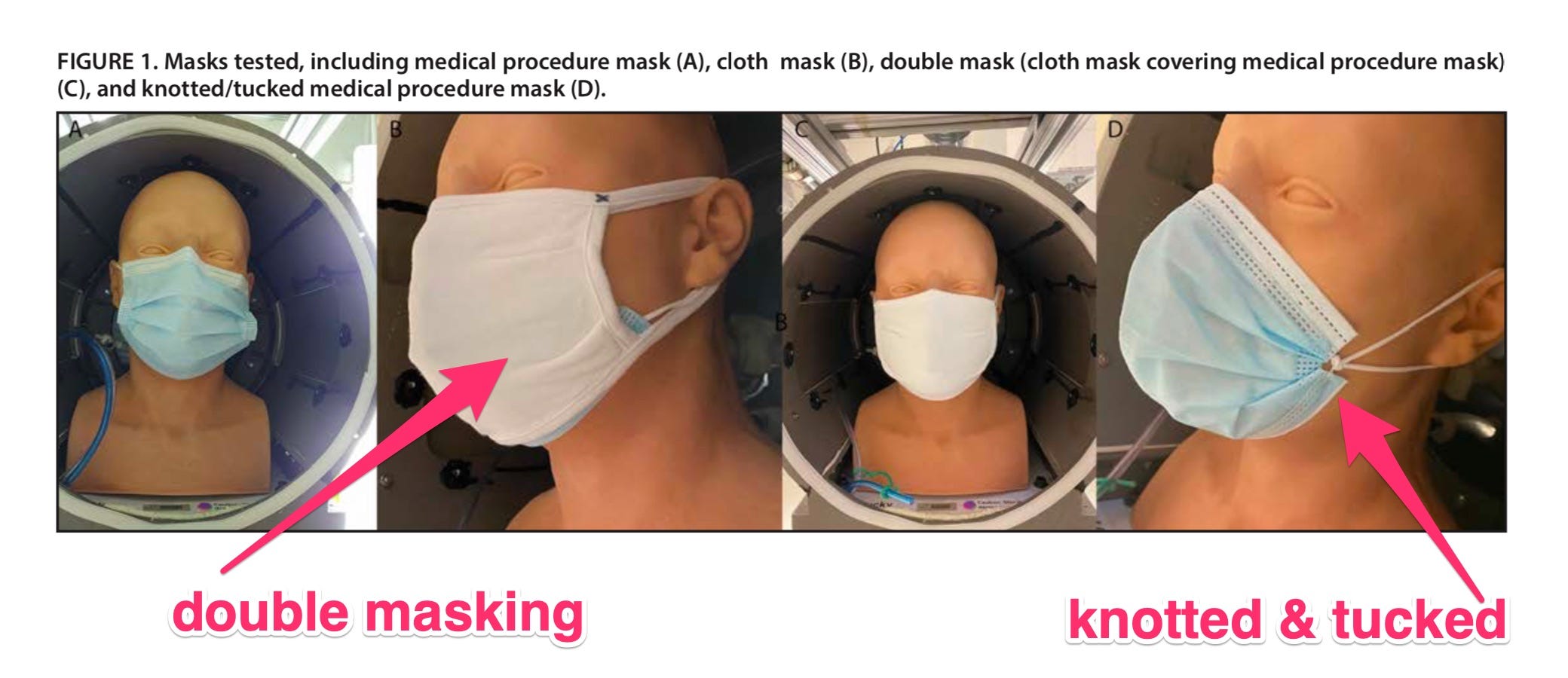
Centers for Disease Control and Prevention
- Double-masking has become a trend, but until today, there hasn’t been much evidence it works.
- A new CDC study suggests that popping a well-fitted cloth mask over a surgical one can improve mask performance by roughly 50%.
- There are plenty of other low-tech strategies that can improve the performance of your mask, too.
- Visit the Business section of Insider for more stories.
Double masking – combining the snug fit of a cloth mask with the filtering capability of a surgical-style one underneath it – can improve mask performance by around 50%, a new Centers for Disease Control and Prevention study found.
That doesn’t mean that you have to double mask, or that double masking will be the right solution for your face. But it could help.
“What we want to do is now help consumers make mask wearing work better for them,” Dr. John Brooks, the CDC’s chief medical officer for COVID-19 response, who co-authored the new study, told Insider.
“There’ve been a number of different ways, simple ways, low-tech ways, that people can improve the performance of their mask,” he said. “More layers helps, better fit is critical.”
The key find from his study, out on Wednesday, is that if everyone wore a mask that fit snugly (as many cloth masks do), and filtered the air well (the way that good surgical masks are designed to), we’d be doing very good at controlling COVID-19 transmission.
Double-masking can improve mask performance by about 50%

NIH/New York Press Club
In the study, researchers at the CDC put masks on two dummy heads: one that coughed and breathed into the air (meant to mimic a sick person with COVID-19), and another head, sitting about six feet away from the first. Then, they measured how much of the would-be infectious particles the first dummy emitted made it over to the second head.
Both cloth masks and surgical masks alone did "OK," Brooks said, at filtering particles out of the air.
A surgical mask alone on the cougher blocked about 42% of the infectious particles from the healthy head, while the cloth one blocked more than 44%.
But, when the researchers put a cloth mask over the top of a surgical mask, they found the double masking strategy dramatically improved the performance of both masks. Double-masking blocked 92.5% of the cough particles.
Surgical masks are good filters, but cloth ones may fit better
Double masking in this way is a strategy that engineer and airborne virus expert Linsey Marr from Virginia Tech originally proposed in a scientific paper published in December.
She realized that while surgical masks don't always fit great, they have some excellent virus-trappers inside: often, they're outfitted with an electrostatic barrier, meant to trap infectious particles, and they're also built from non-woven polypropylene layers, which make them highly efficient, breathable filters. But they don't usually conform to the face as well as a cloth mask.
"I kind of connected the dots," Marr said of her double masking idea. "You can have the filtration of a surgical mask, and you can get a better fit by putting a cloth mask on top."
At the time, this idea was nothing more than a hypothesis. The CDC report is some of the first research to show that Marr's double masking idea actually works in the lab.
"The fact that they got 92% means that there's this effect of greatly improved fit preventing leakage out of the sides," Marr told Insider. "It's the combination of the filtration [from the surgical mask] and the fit [from the cloth mask]."
Double masking is not the only solution, and it is not necessarily the best
—Linsey Marr (@linseymarr) January 26, 2021
If double masking is uncomfortable for you, or makes it hard to breathe, there are other ways to improve your mask.
One other low-tech solution that the CDC tried out in the lab was knotting the ends of a surgical mask, and tucking the fabric, so that it wrapped more snugly around the wearer's face. That worked almost as well as double masking did.
Another strategy that other scientists have tested before is using a mask fitter, which goes on top of a surgical-style mask, and adheres it to a person's face better. Research suggests that adding a mask fitter on top of a surgical mask can make it nearly as good as an N95, which is considered a gold-standard medical face mask.
Some scientists have even proposed using an old sleeve of pantyhose to secure a mask on your face better.
"You've got to find what works for you," Brooks said.
Masks are nearly 100% effective at stopping viral spread if everyone is wearing them and they fit well

Fabrice Coffrini/AFP via Getty Images
Whatever kind of mask people wear, having everyone wearing a good one dramatically improves viral protection for all: both blocking infectious particles from traveling around in the first place, and preventing those that do escape from getting near healthy people's faces.
No matter what kind of well fitting masks the dummies wore in the CDC study, whether it was a double mask, or a tight-fitting knotted and tucked surgical mask, when both the source and the receiver were wearing well-fitted masks, exposure to infectious particles was reduced by more than 95%.
"That shows why it's so important to have everyone wearing a mask," Marr said. "Because you get the first mask on the person who's sick, that reduces the amount they release into the air, and the masks on the other people further reduce the amount they might breathe in."
In fact, she argued that this universal masking strategy could be near as good as any top-of-the-line personal protective gear out there.
"If everyone is wearing a good mask with great filtration and a great fit, then yes, combined, you can easily get to the efficacy of an N95," Marr said.
Dit artikel is oorspronkelijk verschenen op z24.nl










